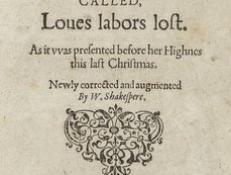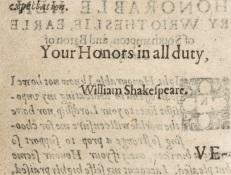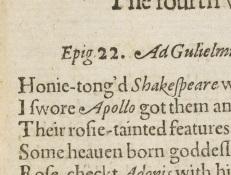To view a sortable list, please visit the Resource
All Documents
1598
Shakespeare’s Richard II was printed in a third quarto edition in 1598, the same year as its second edition. As was the case with the first two editions, London bookseller Andrew Wise was the publisher.
1598
This edition of Henry IV Part 1 is the earliest printed version of the play to survive fully intact.
1598
Richard III was an immediate success in the bookshops of London. Andrew Wise published the first edition in 1597, and copies seem to have sold out very quickly, since he published the play again the next year, in 1598, as shown here.
1598
The second edition of Lucrece, like the first, was published by John Harrison, but was printed by Peter Short.
1598
Love’s Labor’s Lost, first edition: One of the first instances of Shakespeare's name on a title page
William Shakespeare's name first appeared on the title pages of three plays in 1598, including this edition of Love's Labor's Lost. Fourteen copies of this edition are known to survive. The sub-title, "Newly corrected and augmented By W.
1599
William Jaggard published The Passionate Pilgrim in 1599 in two separate octavo editions. While the first edition exists only as a fragment without a title page, the second edition, shown here, carries the attribution “By W.
1599
This 1599 printing is the only surviving copy of the sixth edition of Venus and Adonis, first published in 1593.
1599
The fifth edition of Shakespeare’s perennially popular poem Venus and Adonis appeared in 1599.
1599
This is the second edition of Edward III, printed by Simon Strafford for Cuthburt Burby in 1599.
1599
John Weever’s Epigrammes in the oldest cut, and newest fashion was published in 1599. Weever began his career as an aspiring poet and literary observer at Cambridge, where he was the student of William Covell at Queen’s College.




![Capell *.19[1], signature A2 verso & A3 recto, thumbnail detail](https://shakespearedocumented.folger.edu/sites/default/files/styles/document_thumbnail/public/document-thumbnails/Capell.star_.19_dedication%202_thumbnail%20detail.jpg?itok=LsfydBW9)










